Start Exploring Keyword Ideas
Use Serpstat to find the best keywords for your website
How to Conduct Competitor Analysis and What Approaches To Use At Each Step

Nowadays, there are two major approaches to competitive analysis:
- competitive analysis based on general information about the domain and keywords it ranks for. It is mainly realized via data stored in databases and is available in most SEO tools and platforms;
- competitive analysis based on real-time results collected via Rank Tracking tools for the list of targeted keywords.
Unfortunately, not everyone knows about the second one, let alone consider it. We will discuss each of them in this article to get a clear picture of what we can gain from both of these methods.
So let’s start with the basics and go through the typical steps of a proper Competitive Analysis:
- Determine who your competitors are (based on specific products or niche);
- Research competitors' sales & promotional tactics and results;
- Pinpoint best practices and create a plan of action.
Step 1: Indentifying Competitors
- Competitor is targeting the same keywords;
- Competitor is selling similar products;
- Competitor is covering a significant percentage of online visibility.
First, enter your domain in the search bar on the homepage → select database → click "Search." The service will display a summary report for your domain. To find out who your real search competitors are and get the list of competitors in a single click, go to the "Competitors" report.
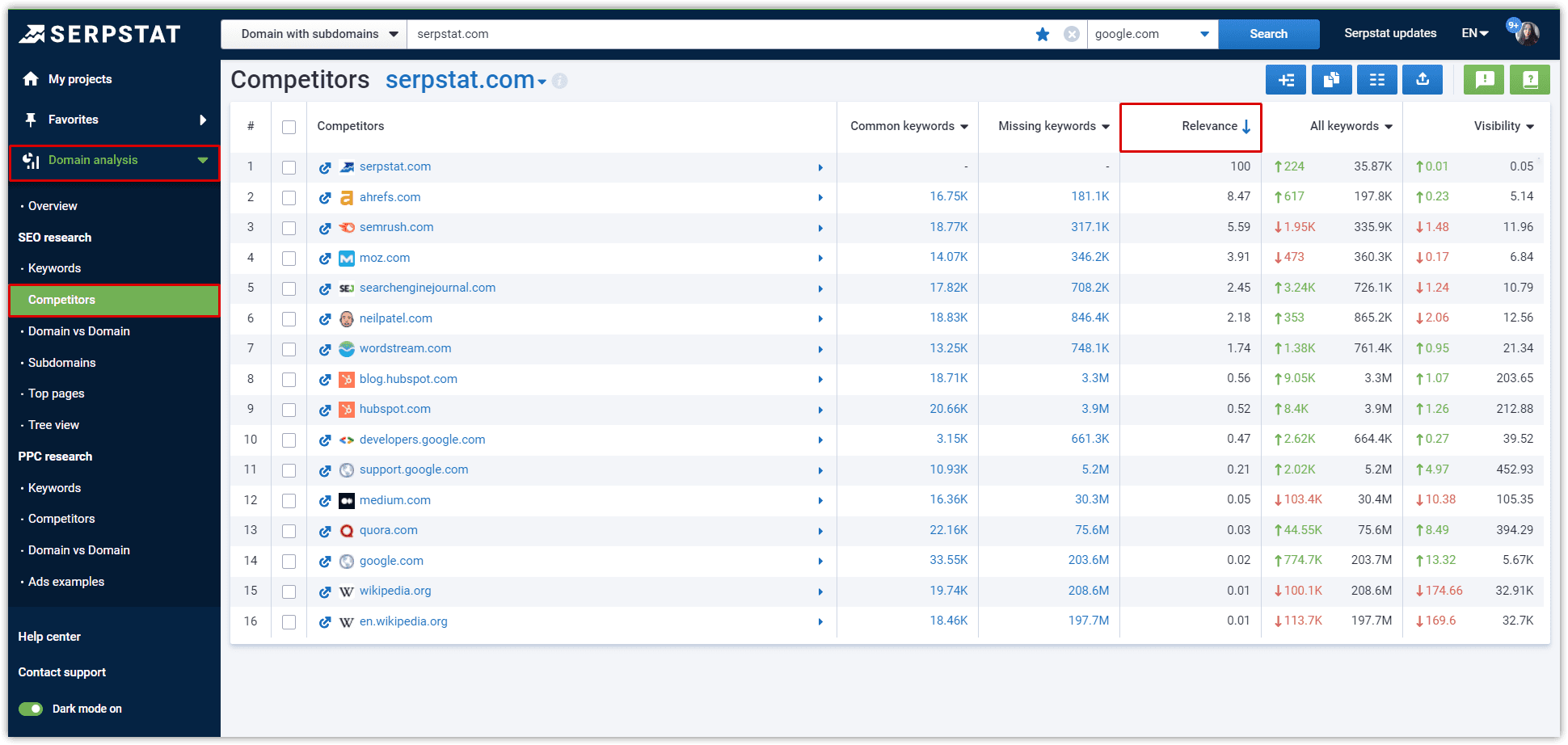
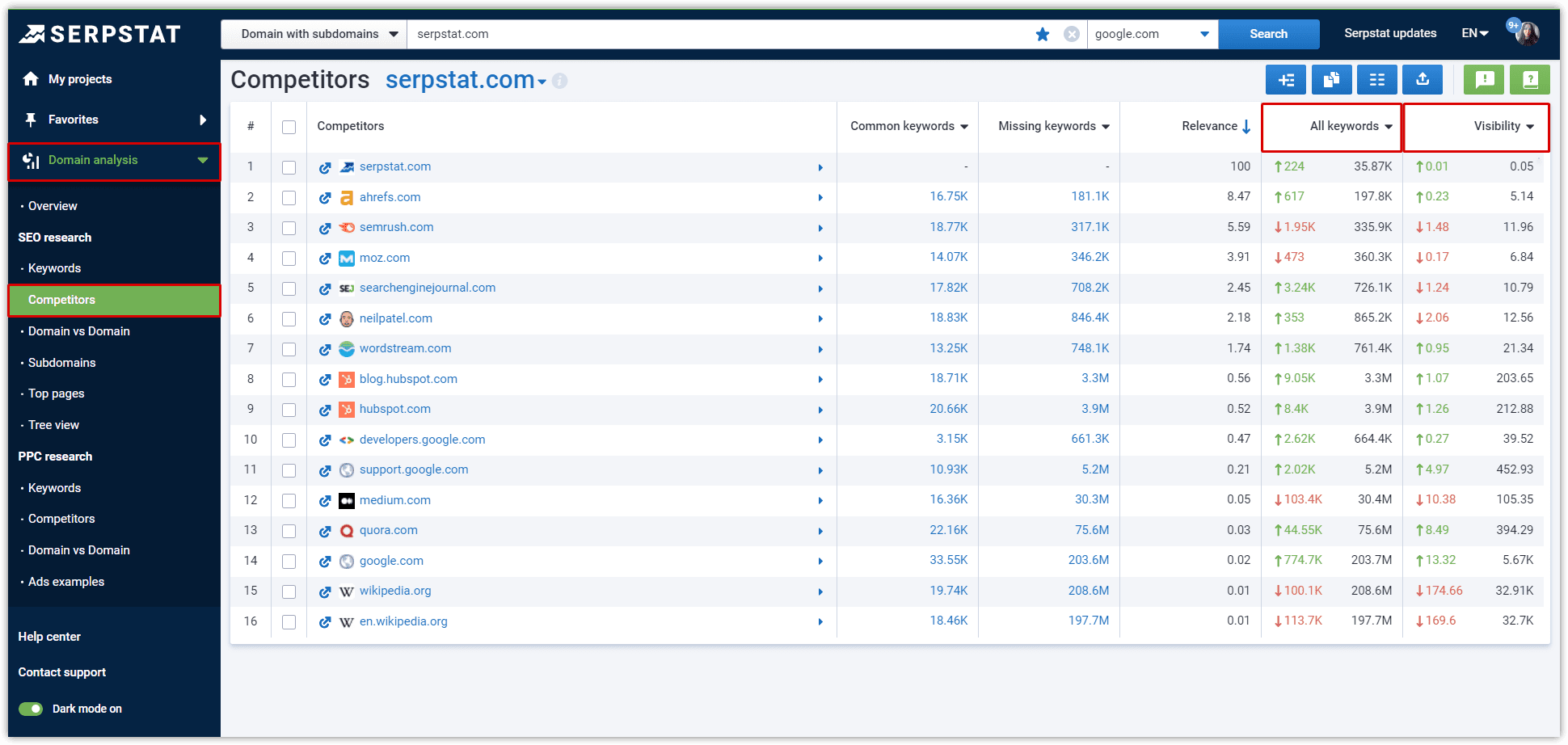
Every single keyword from the TOP-100 being listed here gives us an understanding of how big the keyword list of our competitor’s website is compared to others.
Visibility indicates the general success of the website in Google's TOP-20 search results, which makes it a substantial measurement for comparison.
However, we should keep in mind that not all keywords the website ranks for are actually targeted keywords.
That's why this particular approach isn’t the best in terms of specific data that could help us determine what exactly we're missing.
Although in most cases, this should really help with the identification of your general competitors on the market.
In this case, instead of Domain analysis, it would make more sense to use the URL analysis since it can help you find specific URLs or categories on the competitor’s website for collecting the desired data.
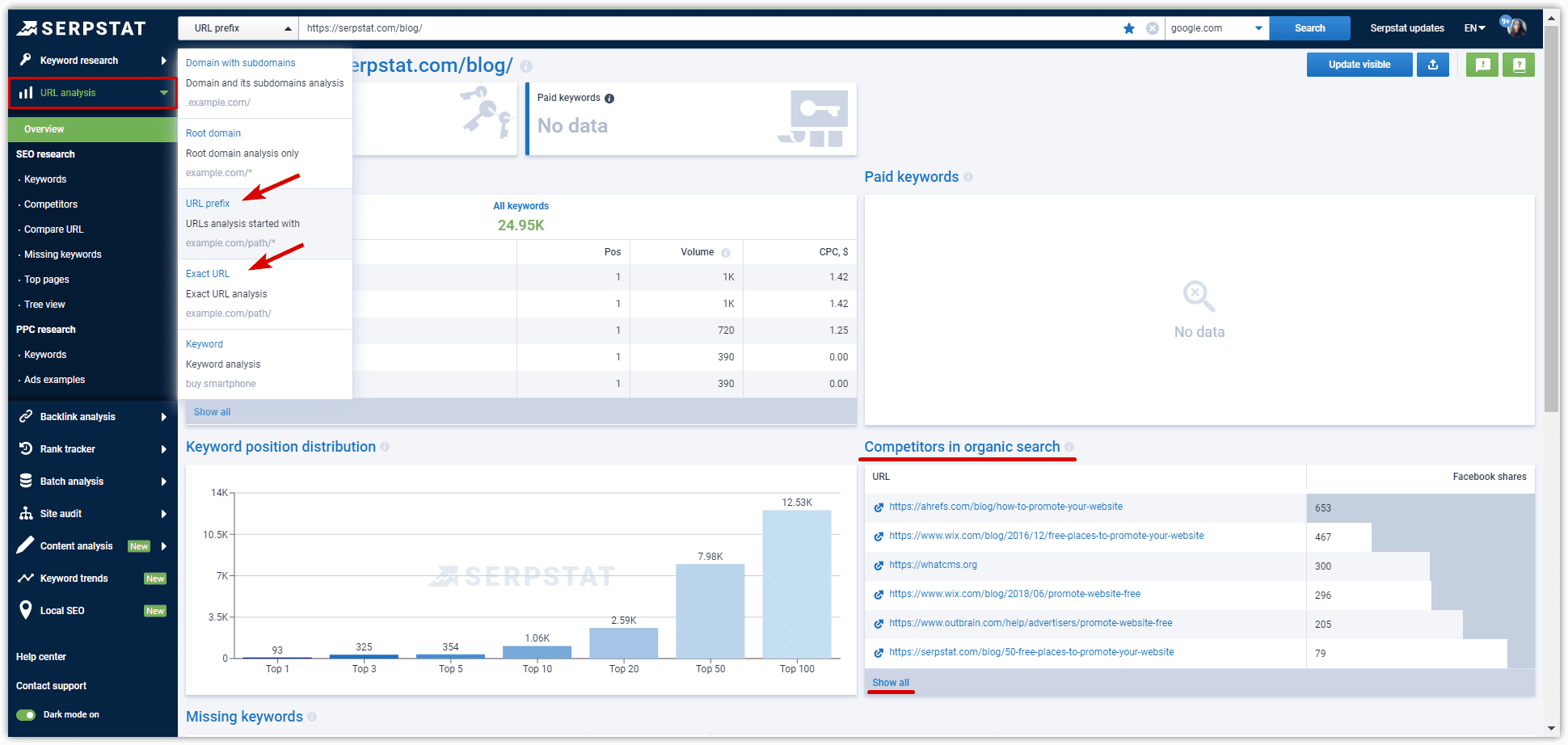
In this case, I would recommend you to use the combination of the methods listed above to collect the data about your competitors. As we can’t do the analysis based on the data about our own website we can simply focus on a certain targeted keyword, and determine the main player on the market for it.
Keyword research tool will help you get it done:
Just in one click, I was able to get a list of TOP content pages for the keyword of interest, here's exactly what I did: went to the "Keyword research" report → chose the "SEO research" tab → clicked on the "TOP pages" report.
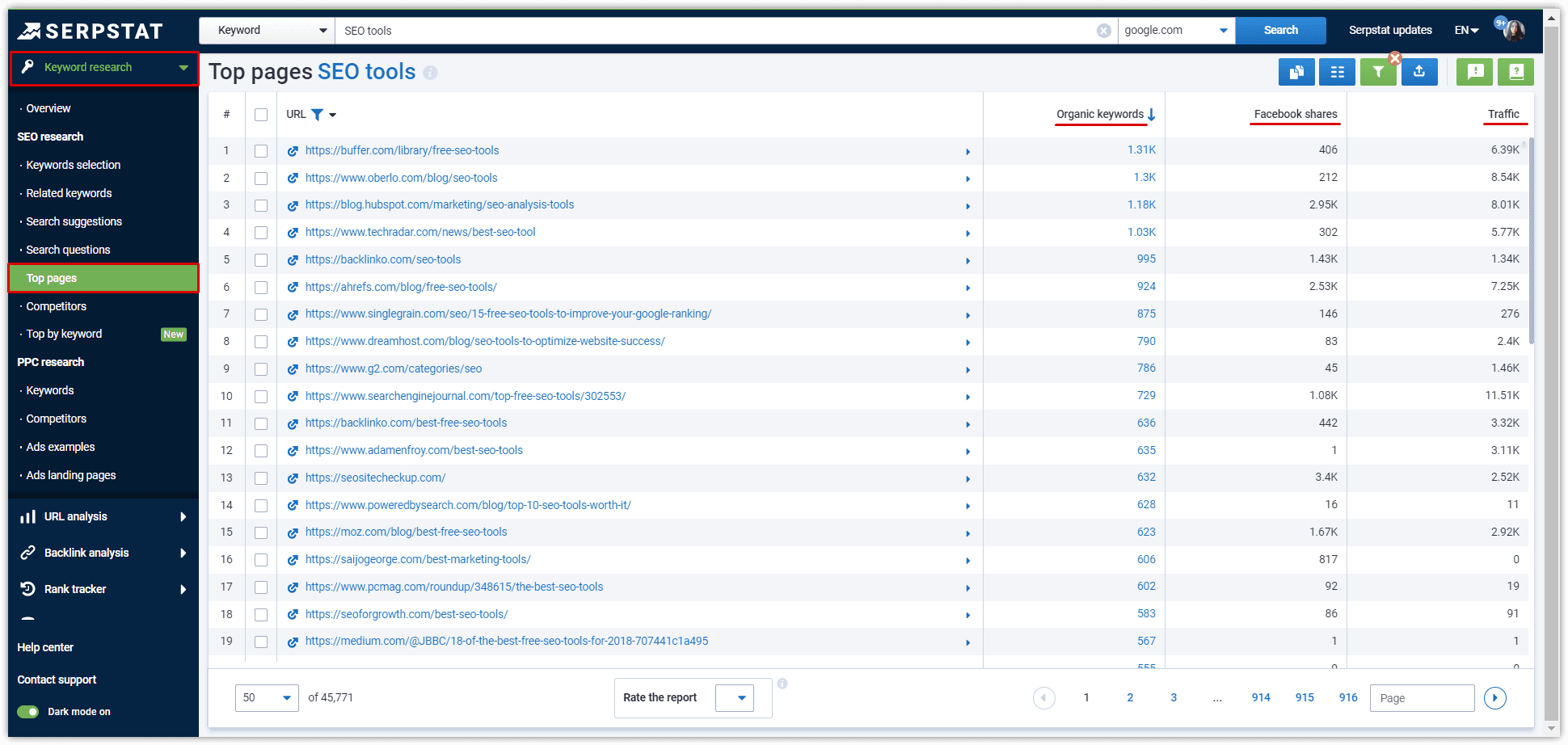
“Organic keywords” will show you the number of variations of the targeted keyword the page ranks for, which is a direct measure of topic coverage;
“Facebook shares” and “Estimated traffic” will help to check competitors traffic.
Within Keyword Research module, Top by keyword report will also be useful as it shows you the SERP for an analyzed keyword. This will help you to identify competitors and also optimize your website – for this, analyze competitors: gather and expand set of keywords for both SEO and PPC, and analyze backlinks and ads.
Go to “Keyword research” report again → choose the “SEO research” tab → click on the “Top by keyword” report.
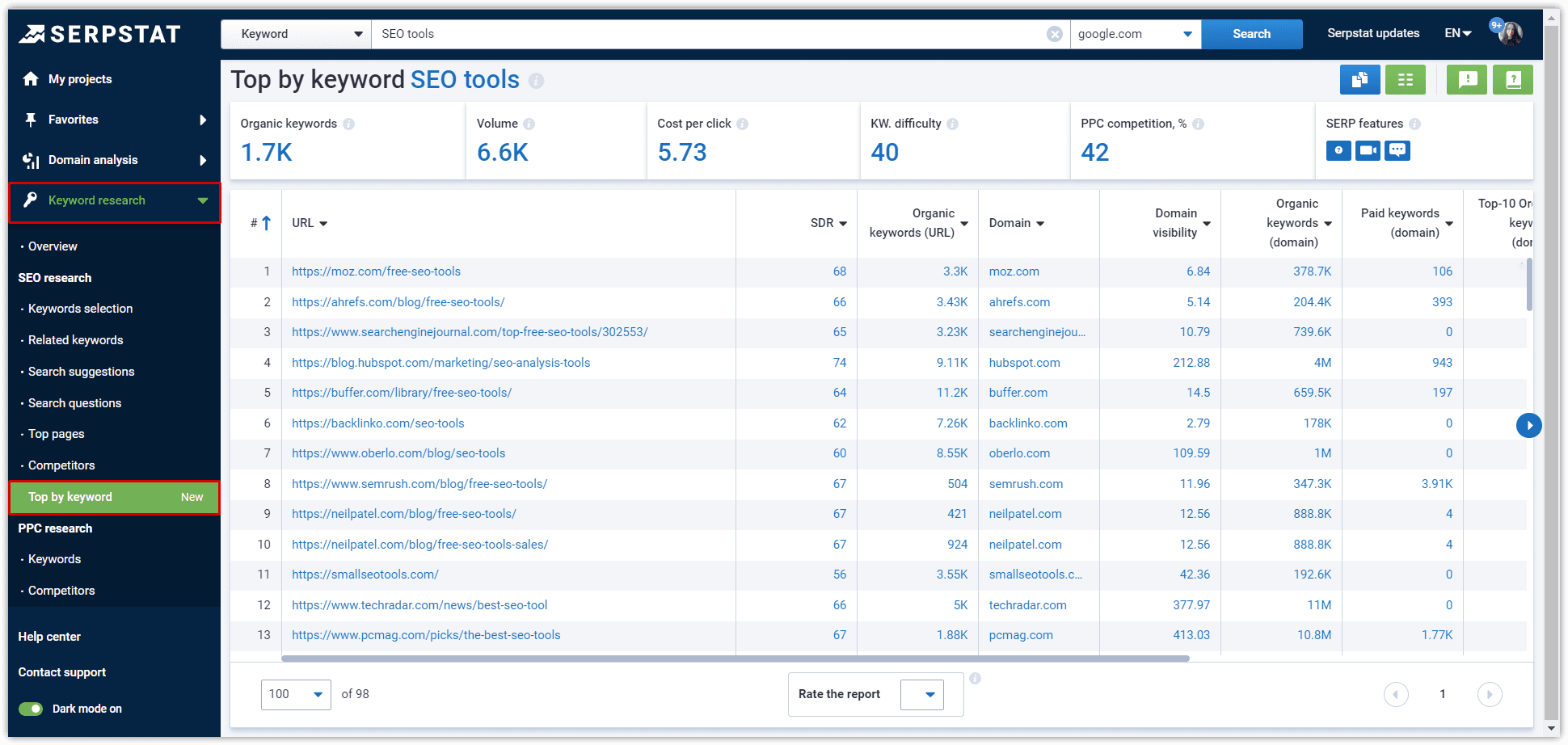
For the keyword:
- a number of variations of the searched keyword based on results;
- search volume;
- CPC (cost per click, $);
- keyword difficulty (KD);
- PPC competition, %;
- SERP features.
For URLs in SERP:
- SDR;
- organic keywords for the URL;
- domain;
- domain visibility;
- domain's organic keywords;
- domain's PPC keywords;
- domain's top-10 keywords;
- domain's backlinks;
- referring domains;
- external links;
- external domains.
That's where the Rank Tracker comes in handy!
But how do you come up with a list of targeted keywords? Let me show you one easy way of doing that:
Go to the "Domain Analysis" section → and select the "SEO Research / Domain vs. Domain" tab. Enter the addresses of competitors' sites in the corresponding fields, then click Compare.
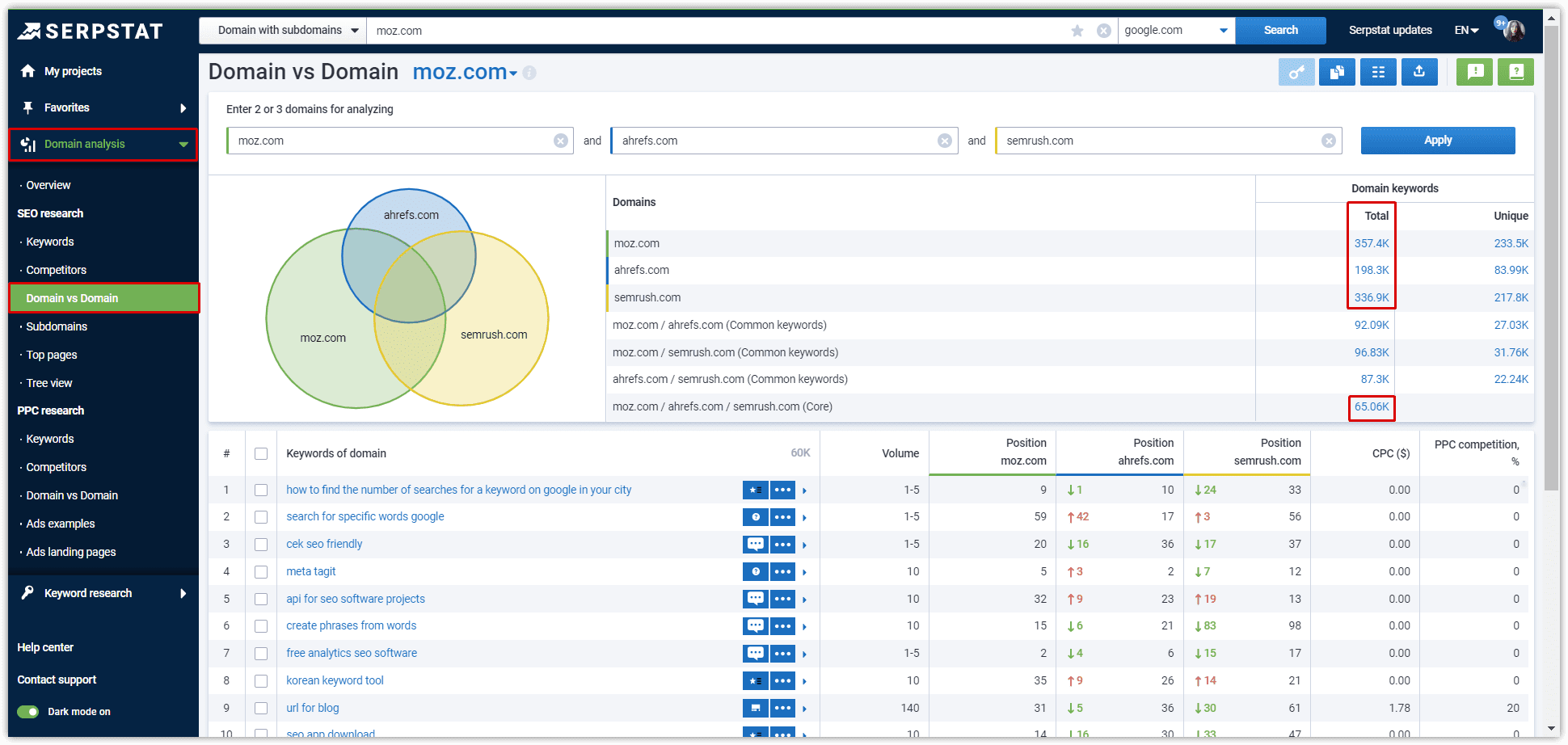
However, at this point, we can see a high number of low-volume keywords in the list. It would be a good idea to remove keywords with a very low search volume so that we could solely focus on keywords that could actually bring traffic to the website.
To do so just export all the intersected keywords and filter them in Excel or Google Sheets in a way that meets your needs.
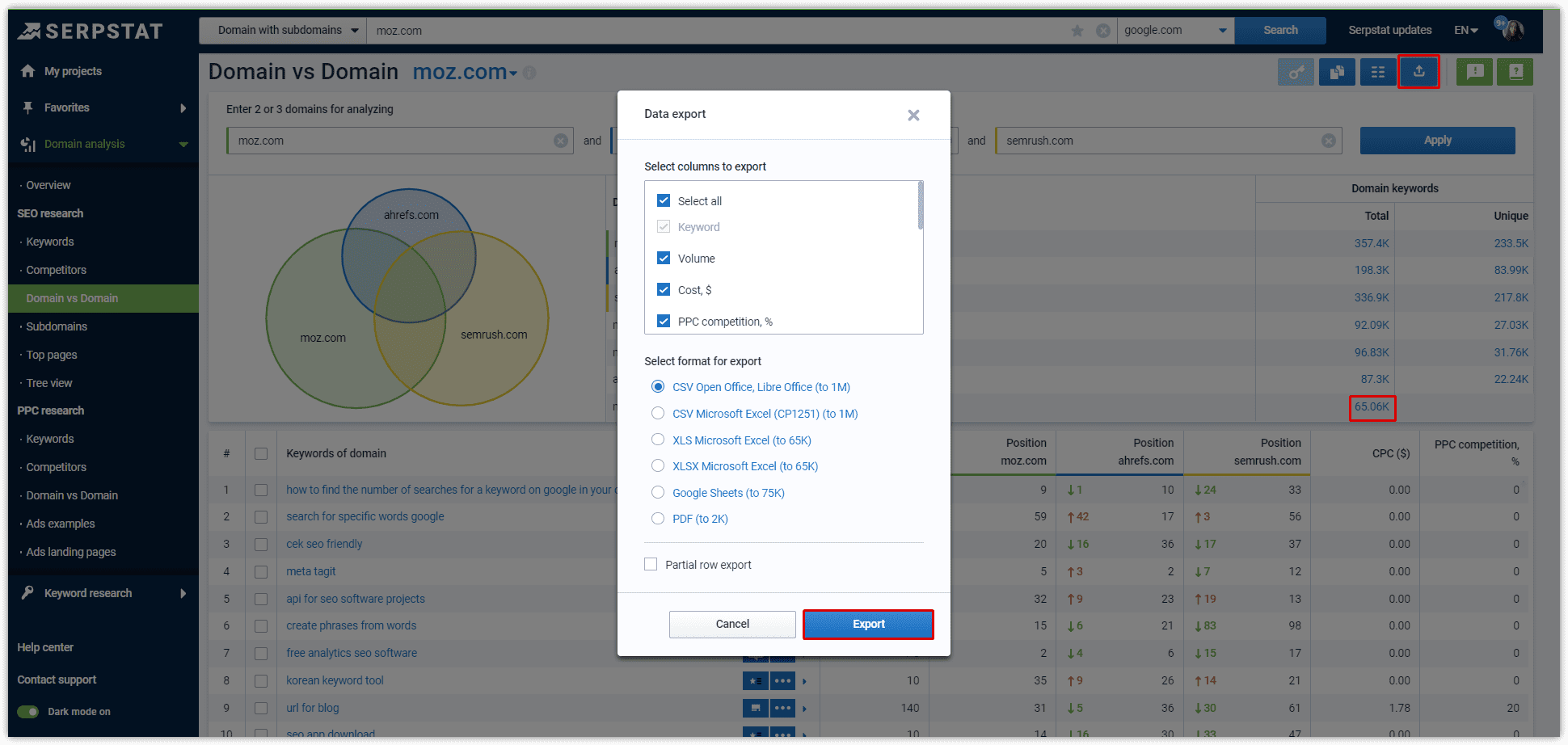
Go to the "URL Analysis" section → and select the "SEO Research / Compare URL" tab.
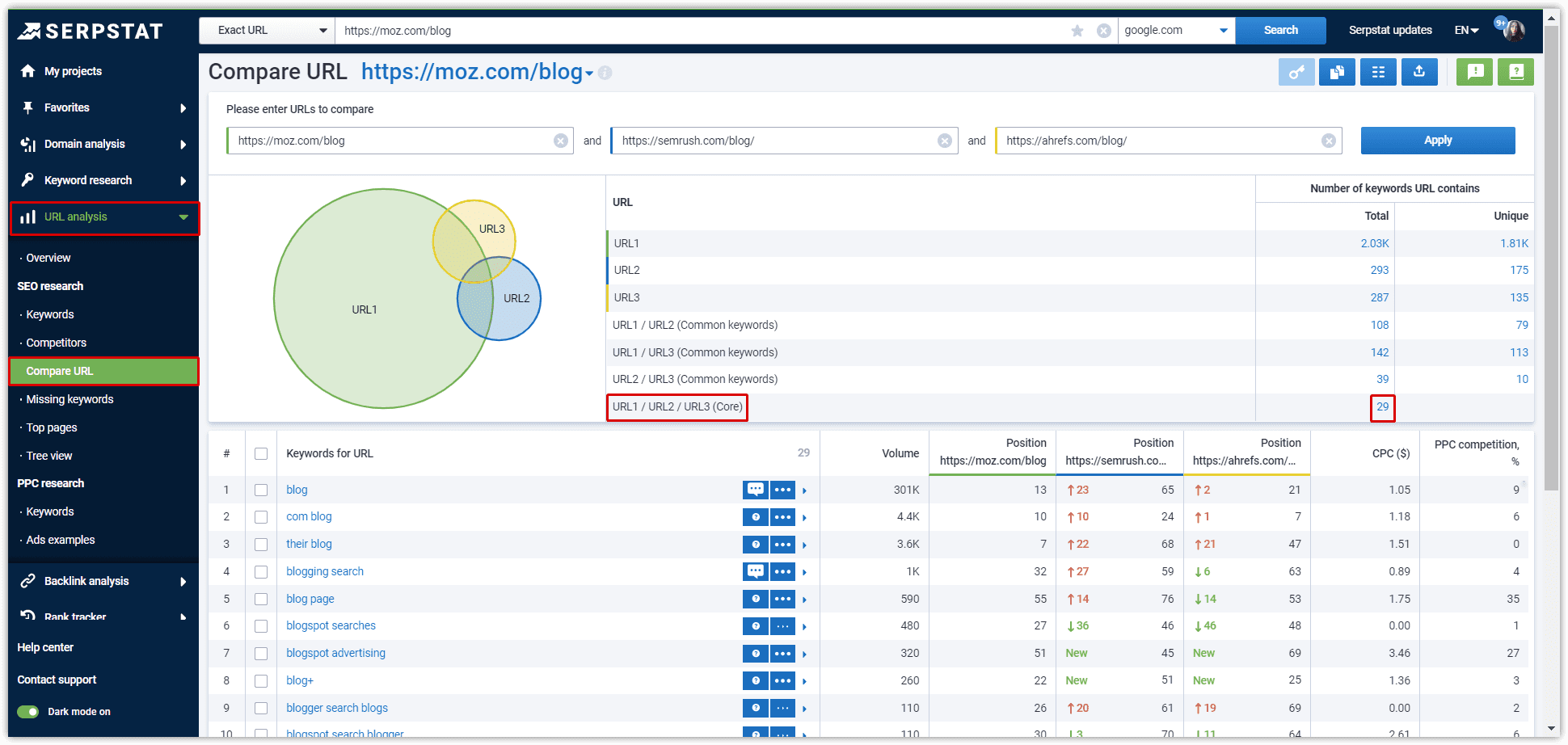
Step 2: Researching Competitors' Tactics and Results
Although, there's also one section in Domain Analysis that I often use to quickly find successful pages of my competitors for the keywords I need, and that is "Tree view".
As you can check the distribution of keywords among the website pages, Tree View is often used for exporting the whole keyword list and website structure of your competitor(s). It could potentially save you a lot of time when developing the structure of your website.
But for now, we're just going to need it to identify successful cases.
Go to the "Domain Analysis" section → and select the "SEO Research / Tree view" tab.
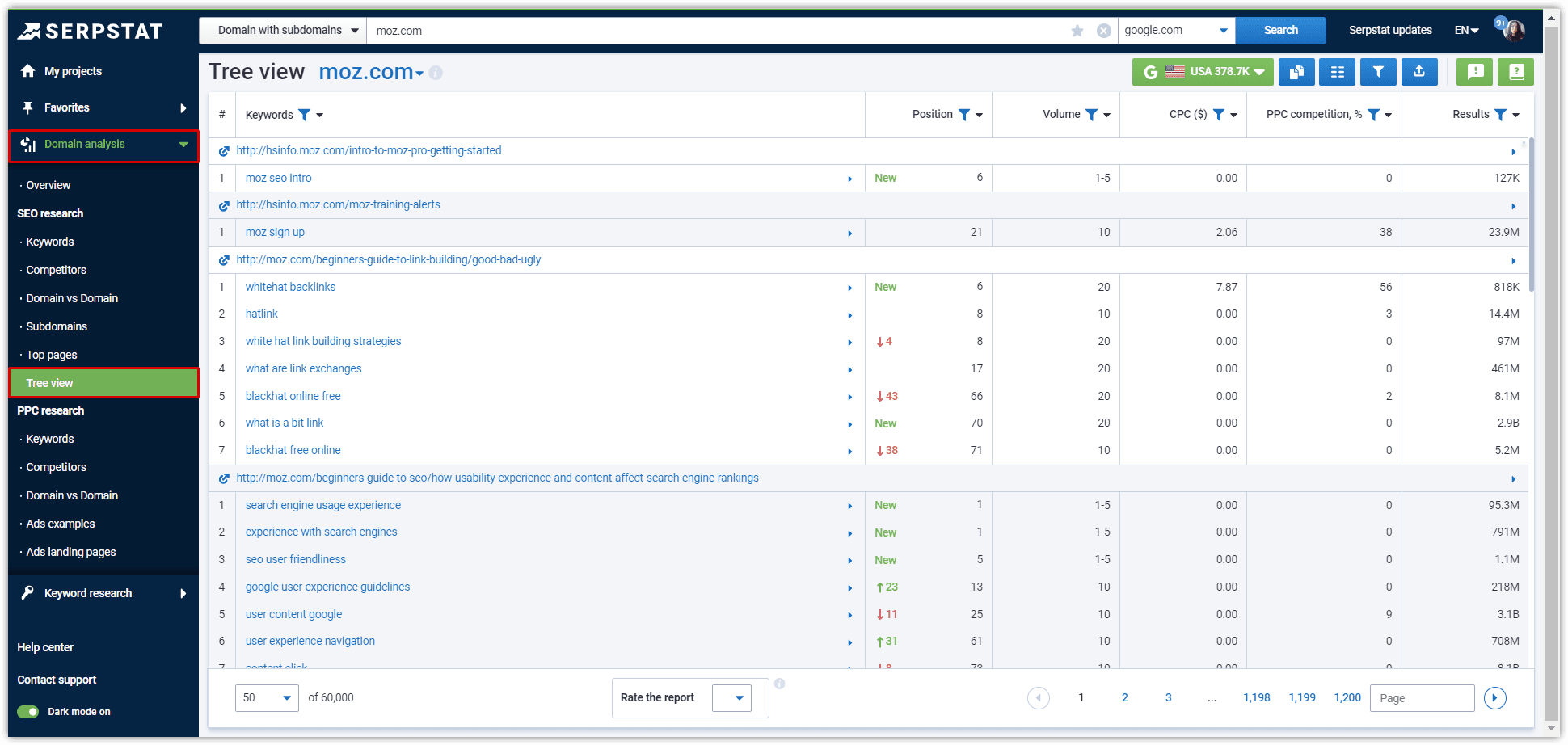
First, I'm going to use multilayer filtration to find the following:
- competitor's pages on leading positions (1-10 or the first page of SERP);
- pages that rank for keywords that could bring traffic. In our case, that is the monthly volume of 1000 but this number could be much lower for some niche products;
- Pages with the topic of interest (in our case it's “SEO”).

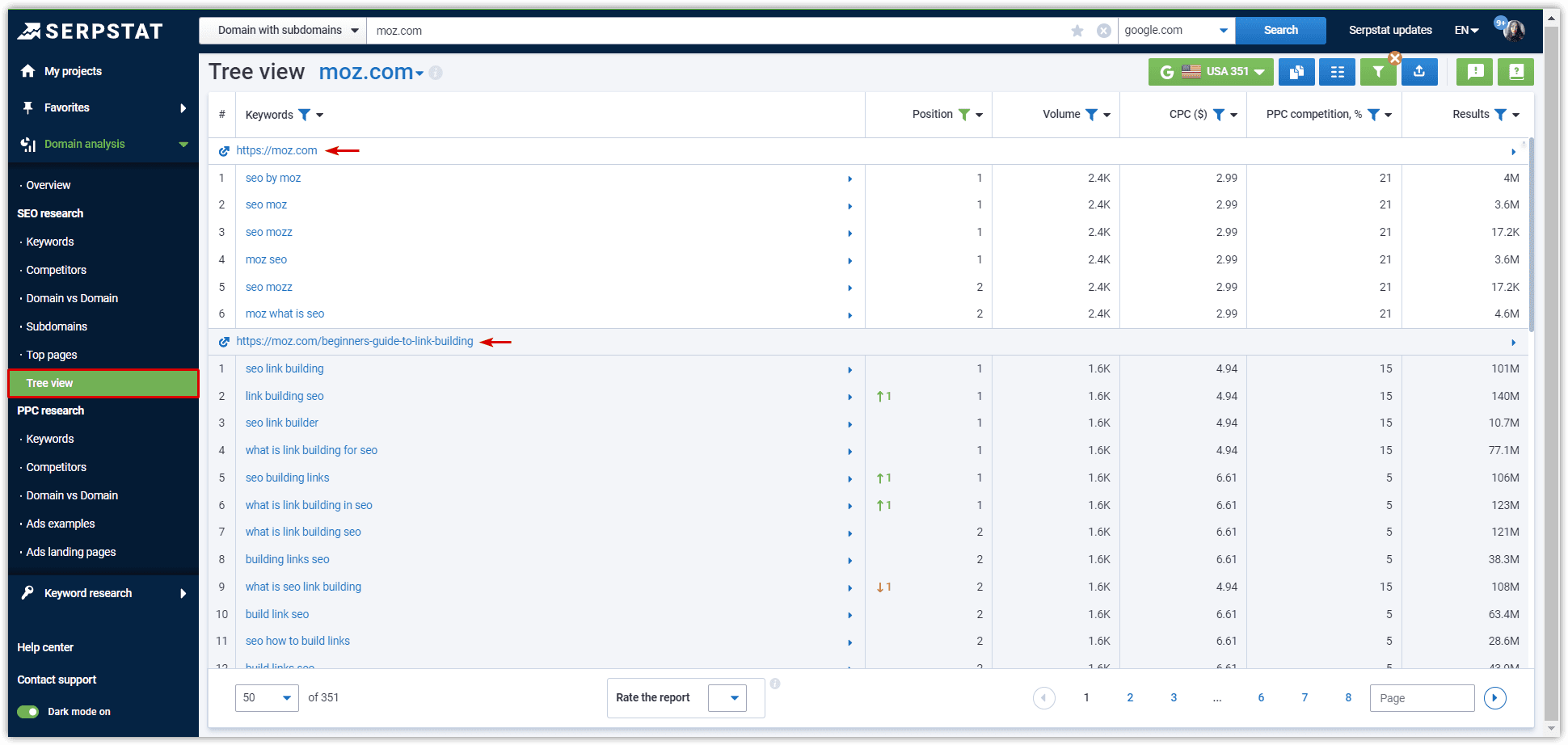
Let's go through areas of my interest one by one. First, it's metatags and general structure of the content.
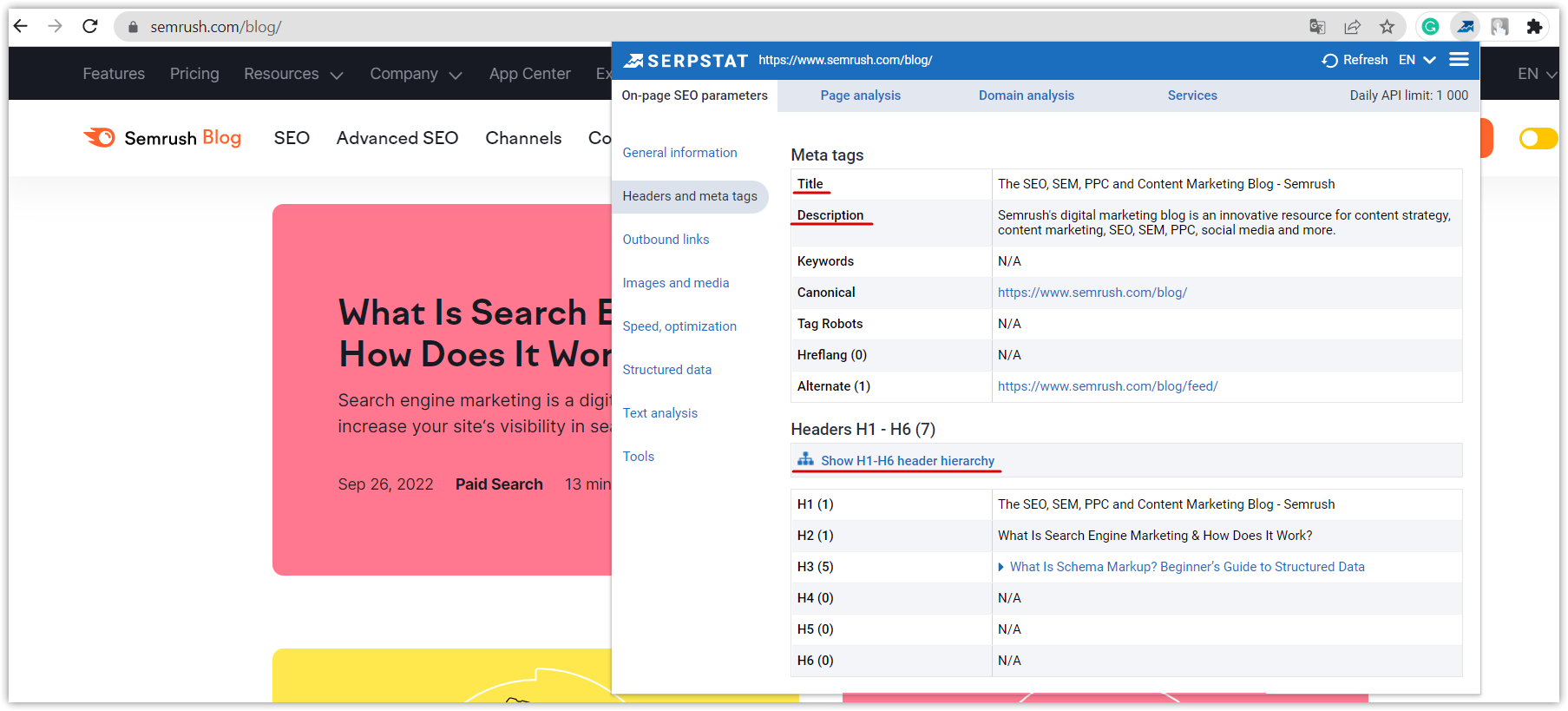
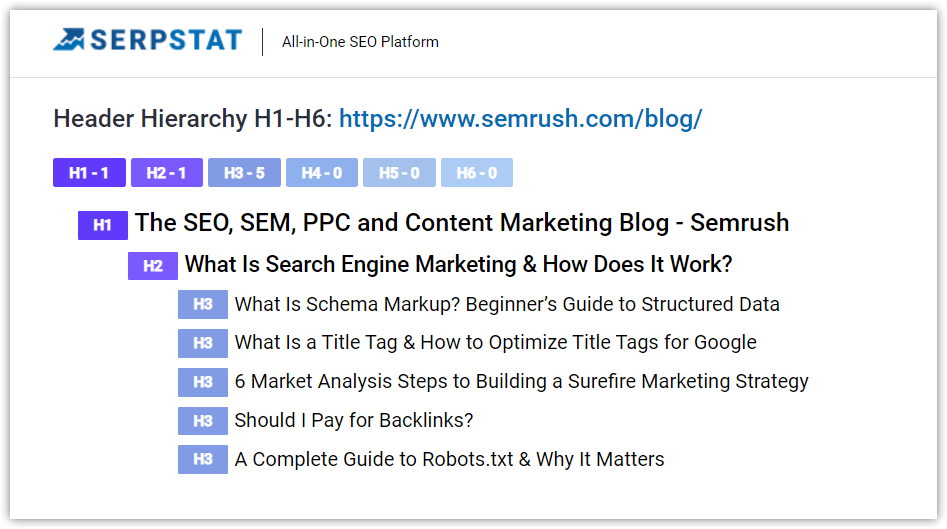
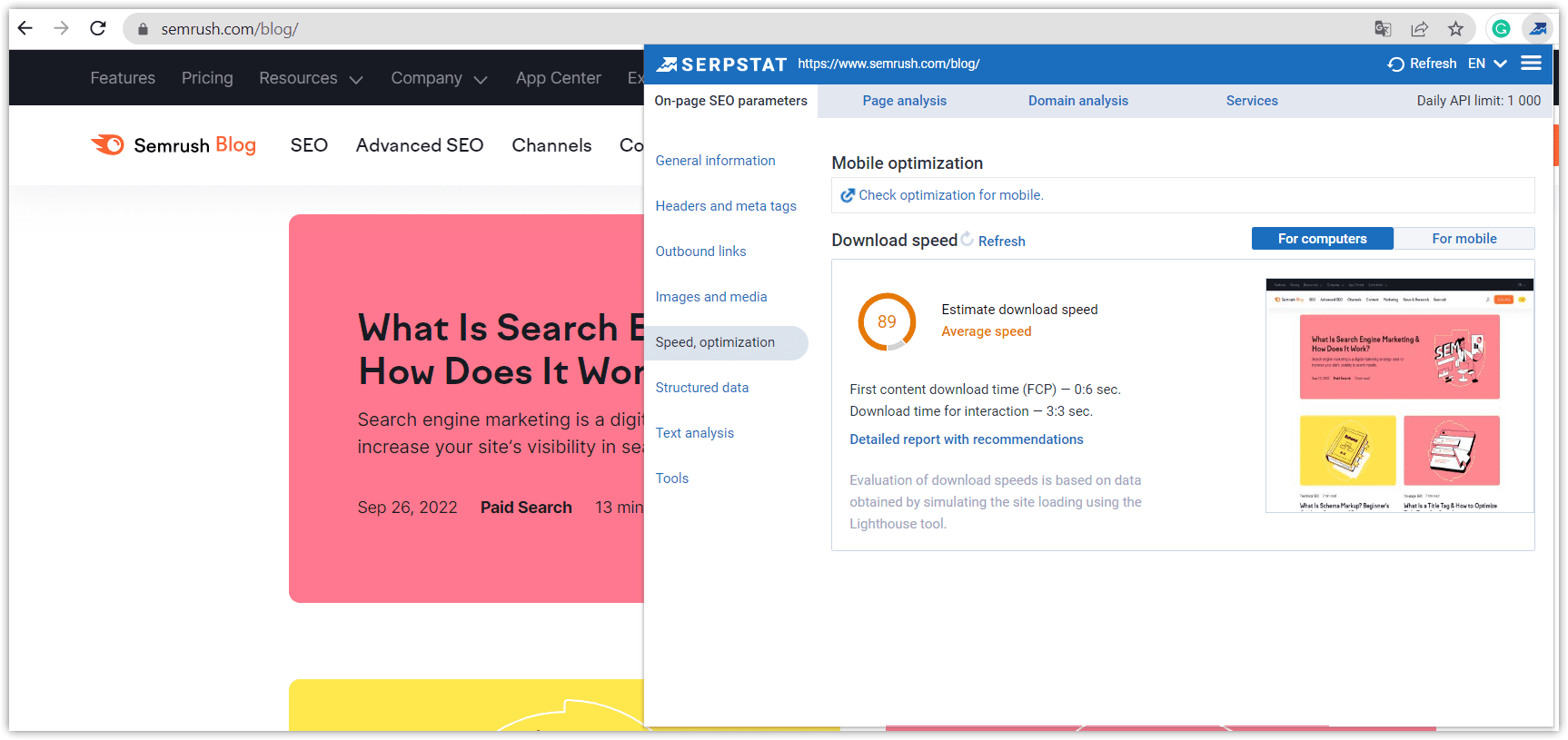
achieve better rankings in Google SERPs via Google Featured Snippets.
In this case, it is only an Open Graph but generally, I can see anything highlighted with a help schema markup.
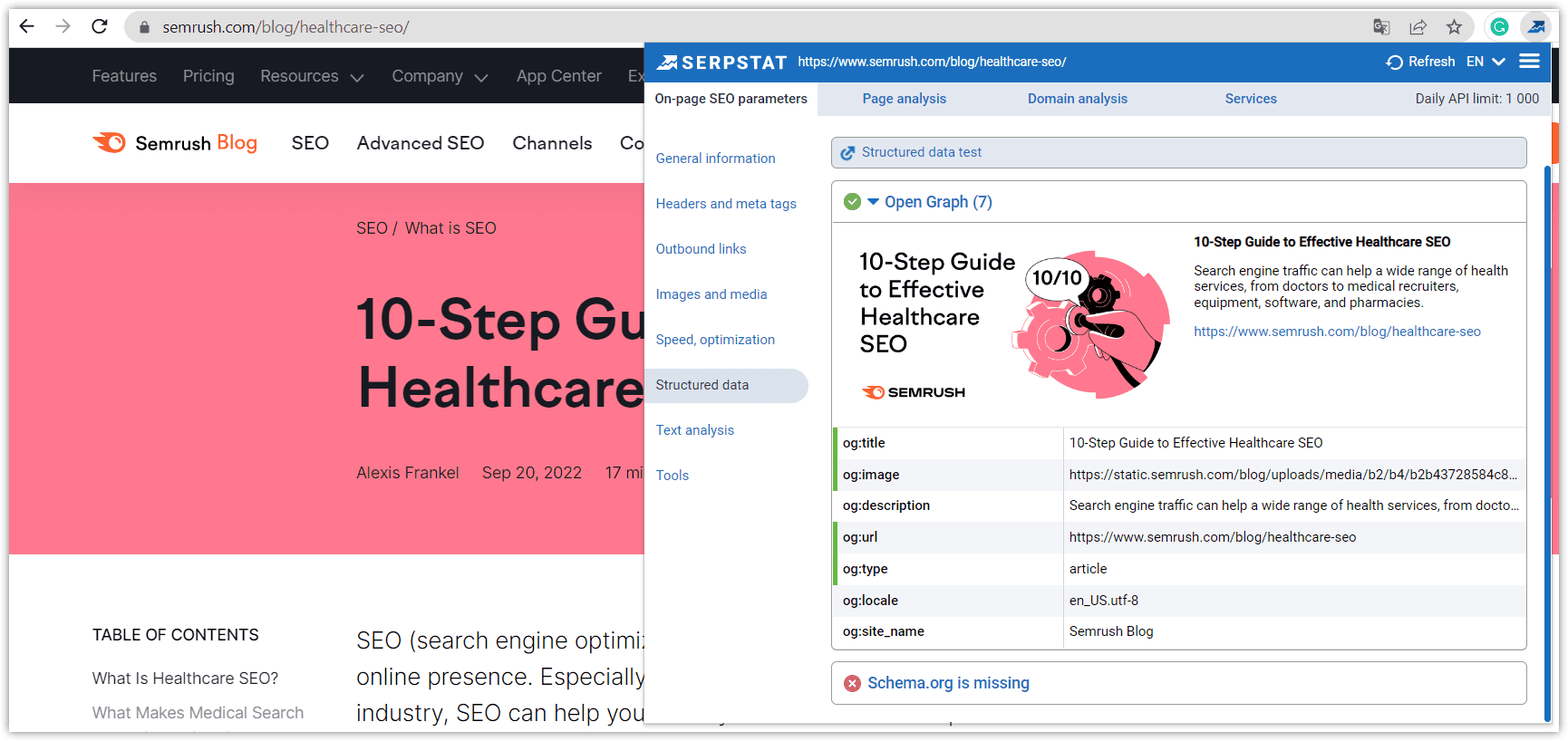
Let's go step-by-step through all the settings in Serpstat Rank Tracker that we need to launch our project and get the necessary results:
- 1. General settings
Serpstat will track your competitor's positions alongside your website without you having to spend any additional credits. So basically, it tracks your competitors for free.
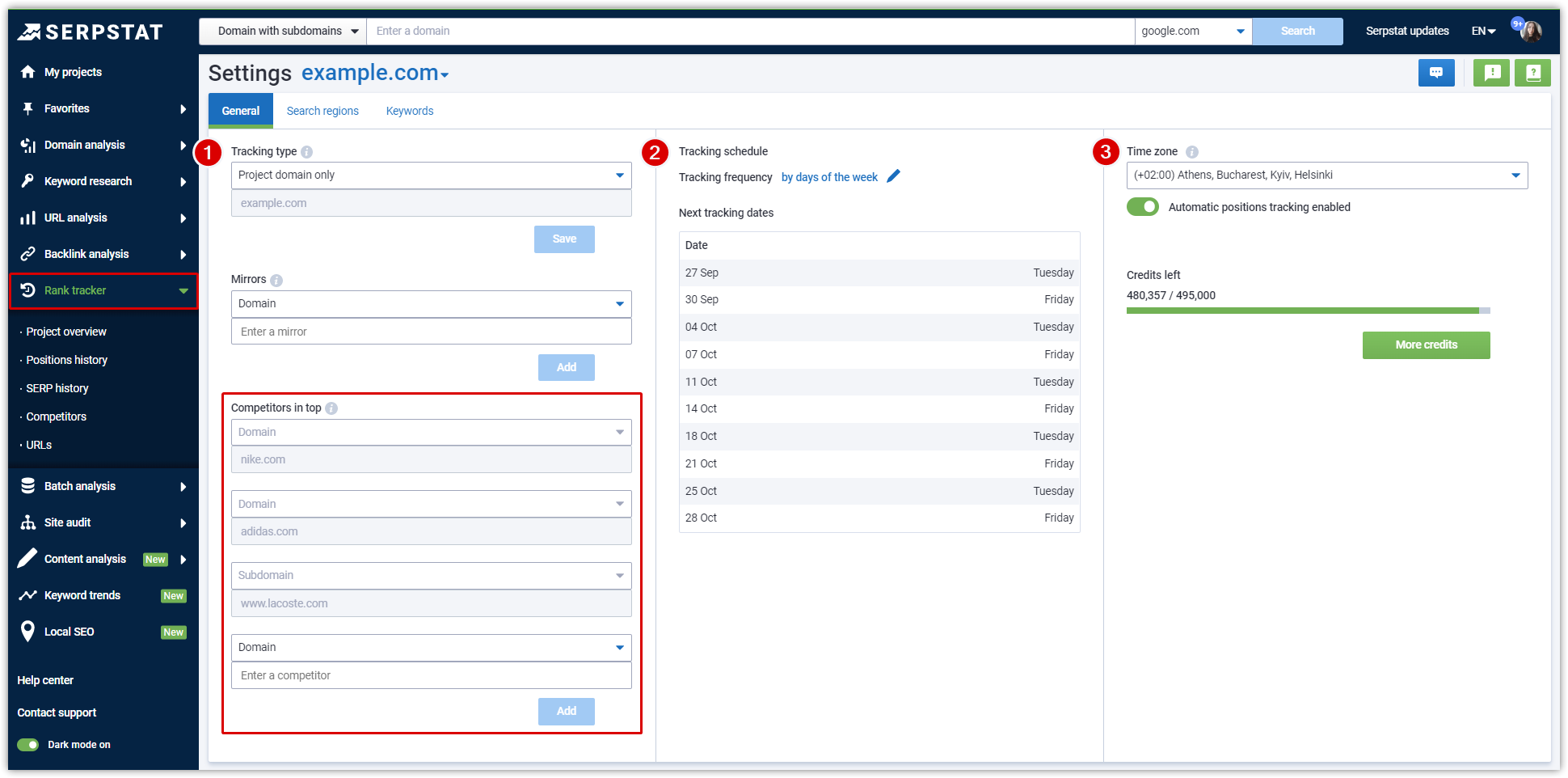
- 2. Search regions
In most cases, it's enough to just select the search engine, SERP type, device, and country.
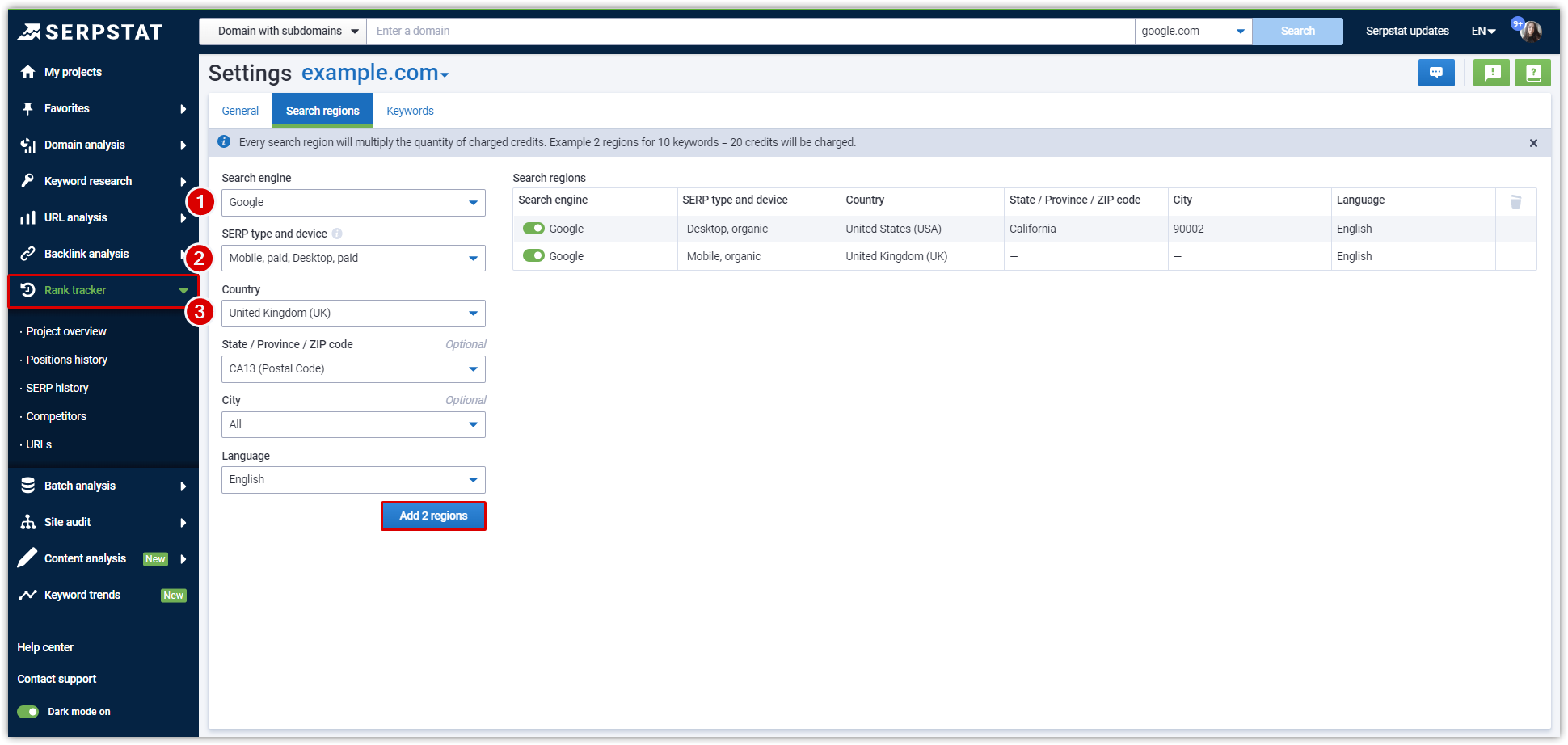
- 3. Add the list of keywords
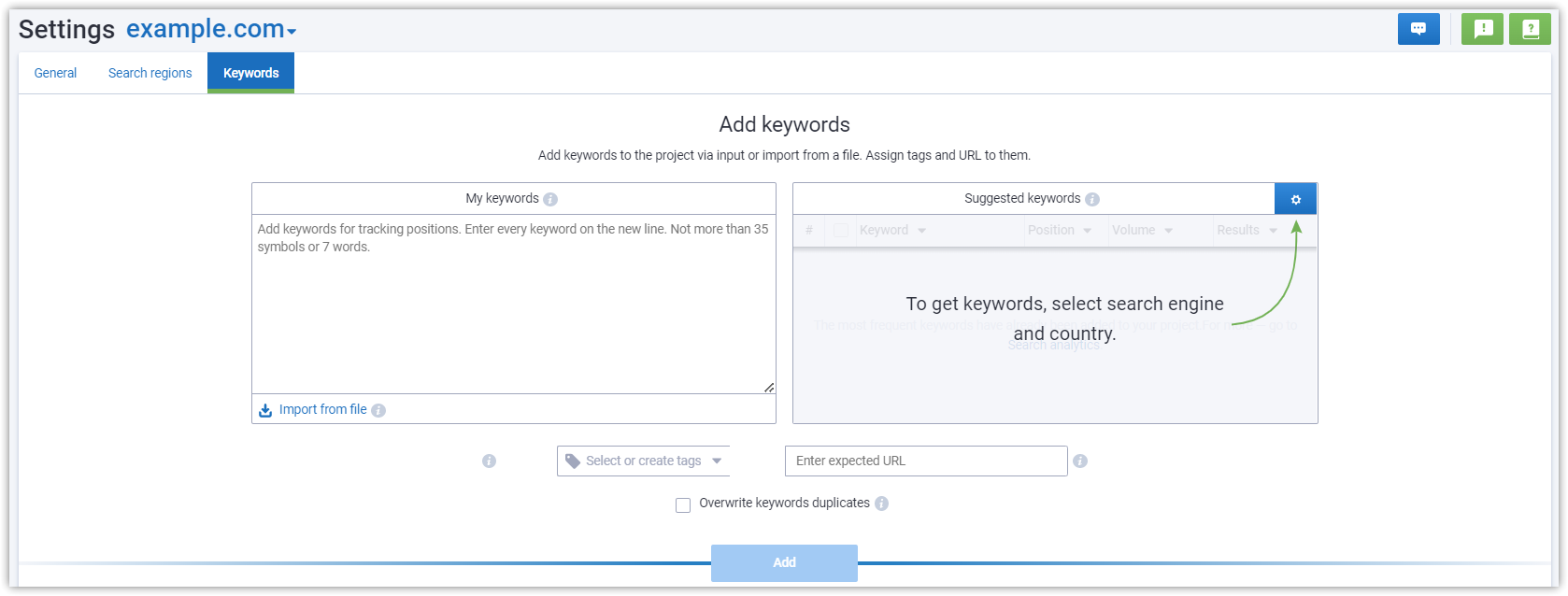
Reports containing keywords allow you to send any chosen keyword(s) directly to your project, including Rank Tracker.
You can select any keywords you need at any point, even while analyzing your competitors, and have them sent to the Rank Tracker directly, which can save you a lot of time.
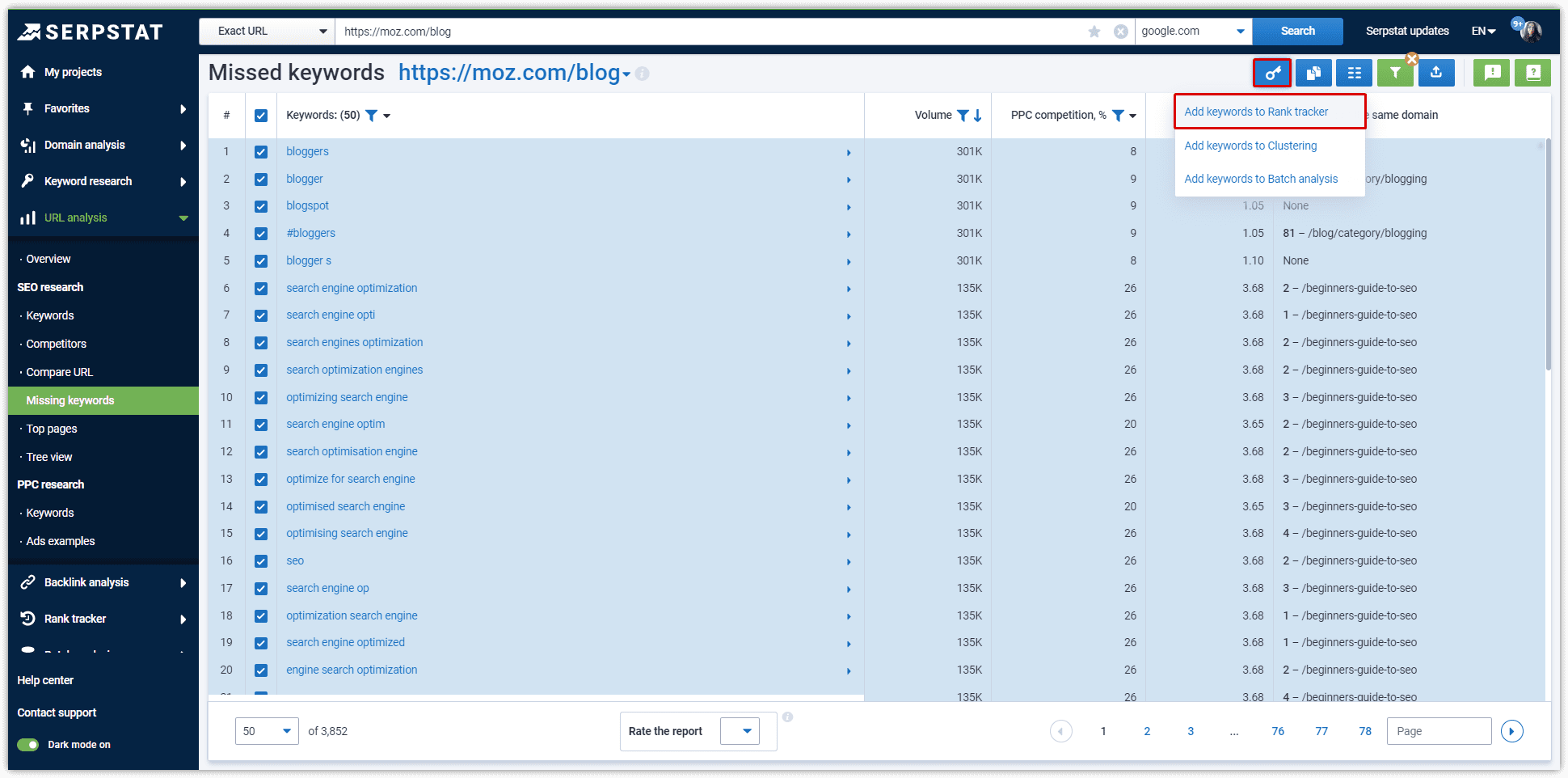
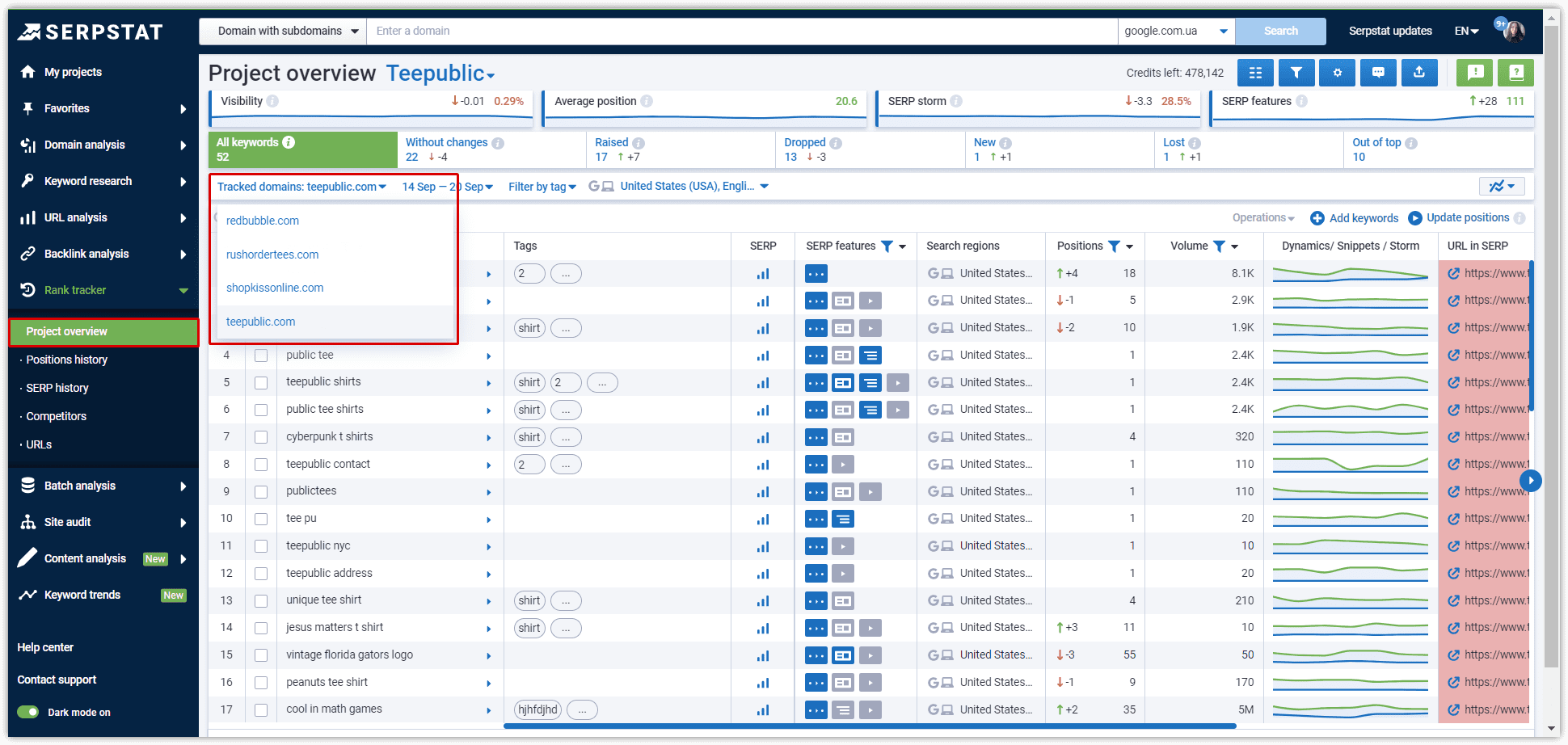
To sum it all up, the Serpstat Rank Tracker tool allows you to not only analyze the performance of your website but also simultaneously track your competitors' websites in the same way as your own.
Whenever you want to see the progress of your website over a certain period of time, all you need to do is select the time frame you're interested in, and you will get a dedicated report where you can check the dynamics of your positions:
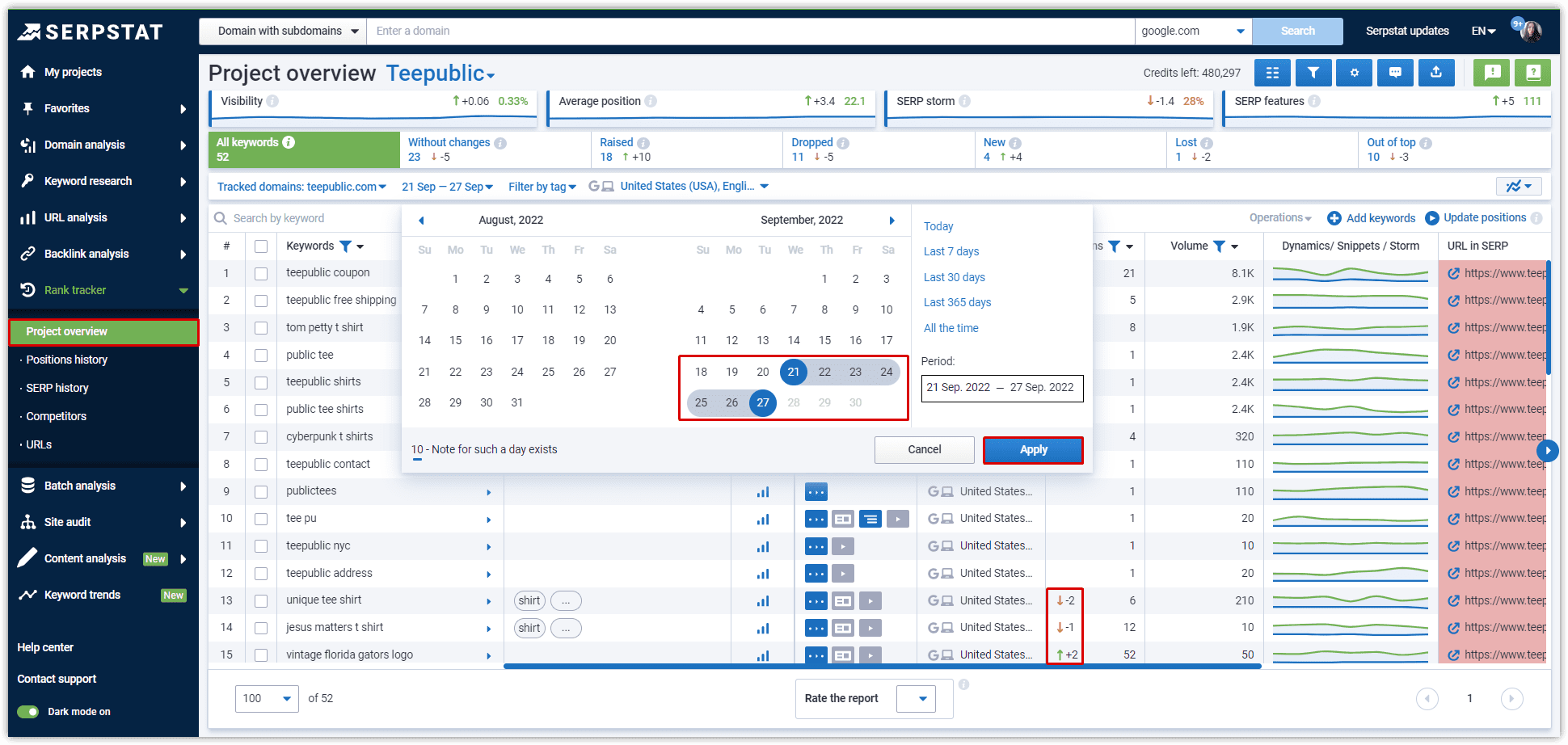
In this case, you need to make sure that the tag for each keyword is listed in the third column:
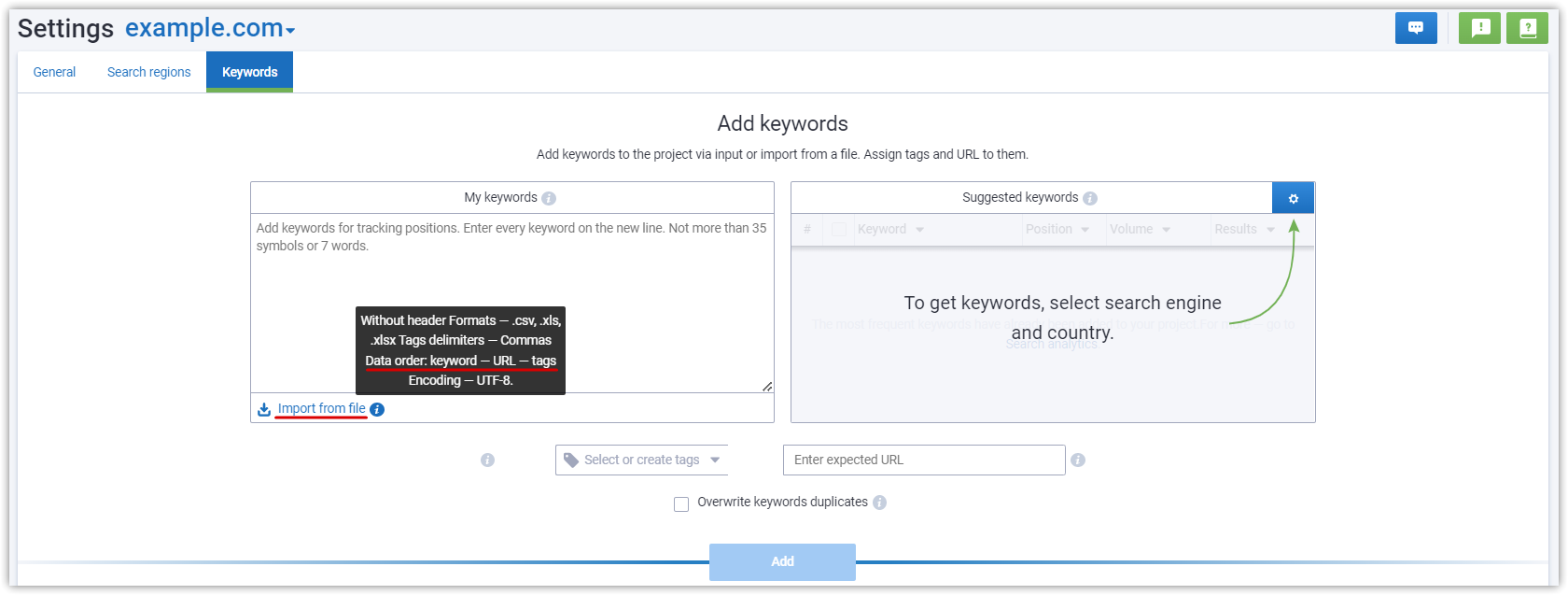
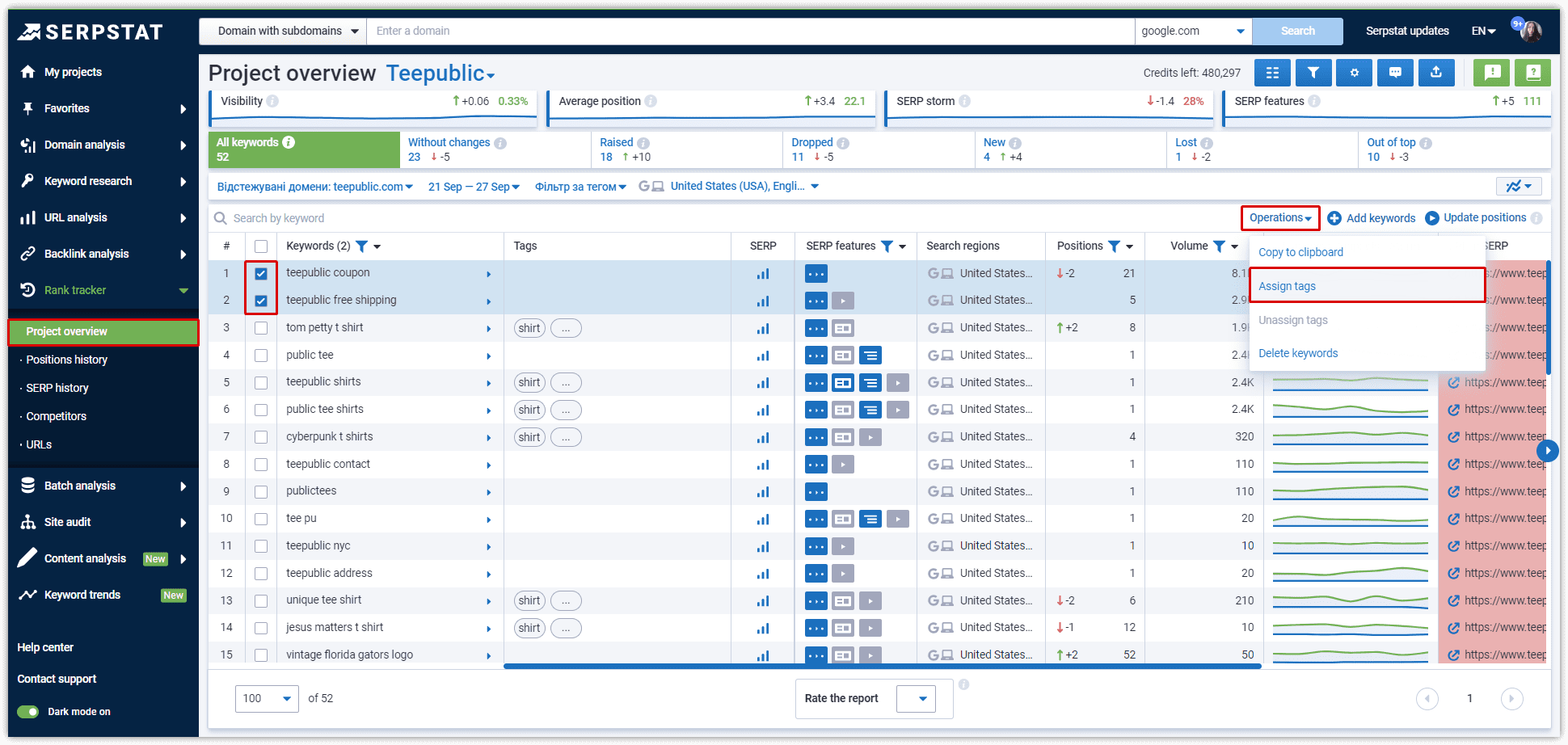
So how do you use the competitor tracking?
Go to the "Rank Tracker" section → select the "Competitors" tab.
With the “Competitors” report we are able to check what's going on in terms of the general competition in the targeted market.
On the following screenshot, you will see that the system shows me the list of competitors that are working with the same keywords, as well as their traffic share, and the dynamics of their performance over a period of time.
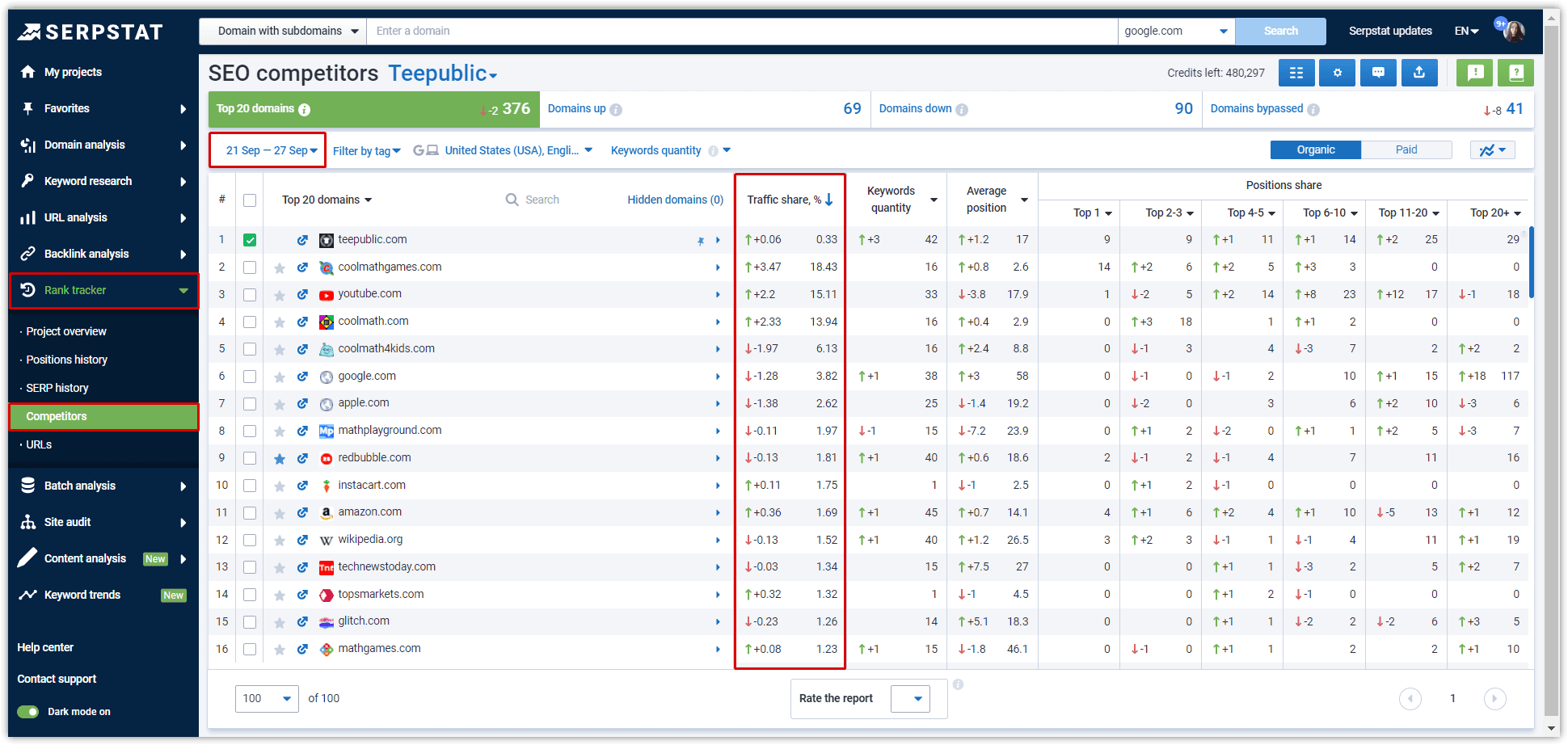
It could be very helpful at least in 2 cases:
- You added some new keywords to the project that represent a new niche for you, and would like to know who your competitors are in this niche;
- Certain products are not a part of your current product line and you expect to have a very different competitor list for them.
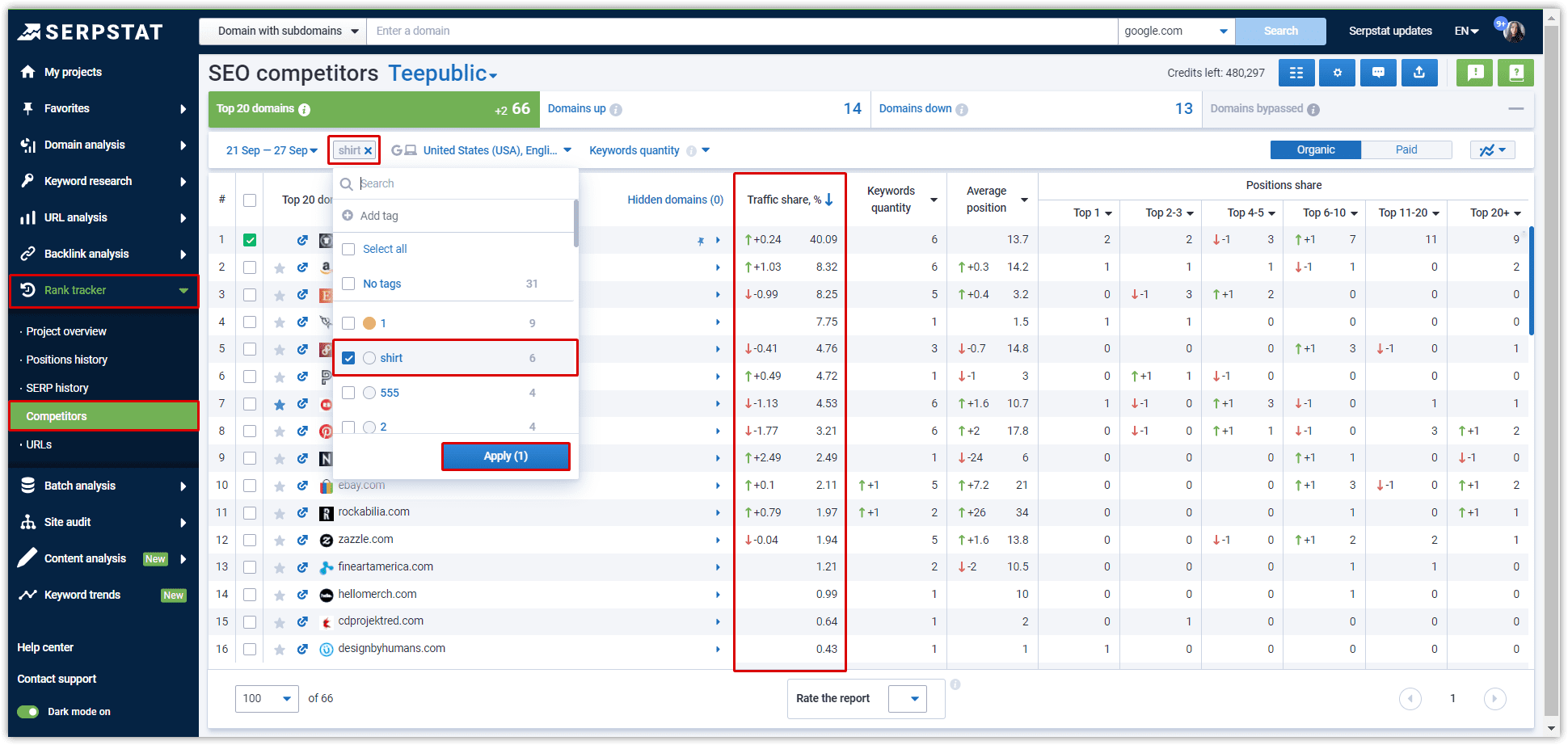

Step 3: Finding Best Practices and Creating a Plan of Action

In the SERP features column, you can clearly see where your website is being active (highlighted in blue), as well as the area you're missing out on, the grey one. The latter is pretty much your pathway to further website optimization.
Let’s imagine that all your promotional activities for some keywords didn’t yield any positive results, and despite all your efforts, your positions are still dropping. Here is an example:

It will allow us to see what websites are evolving on the market with particular keywords, while our positions are dropping or aren't as high as we would like.
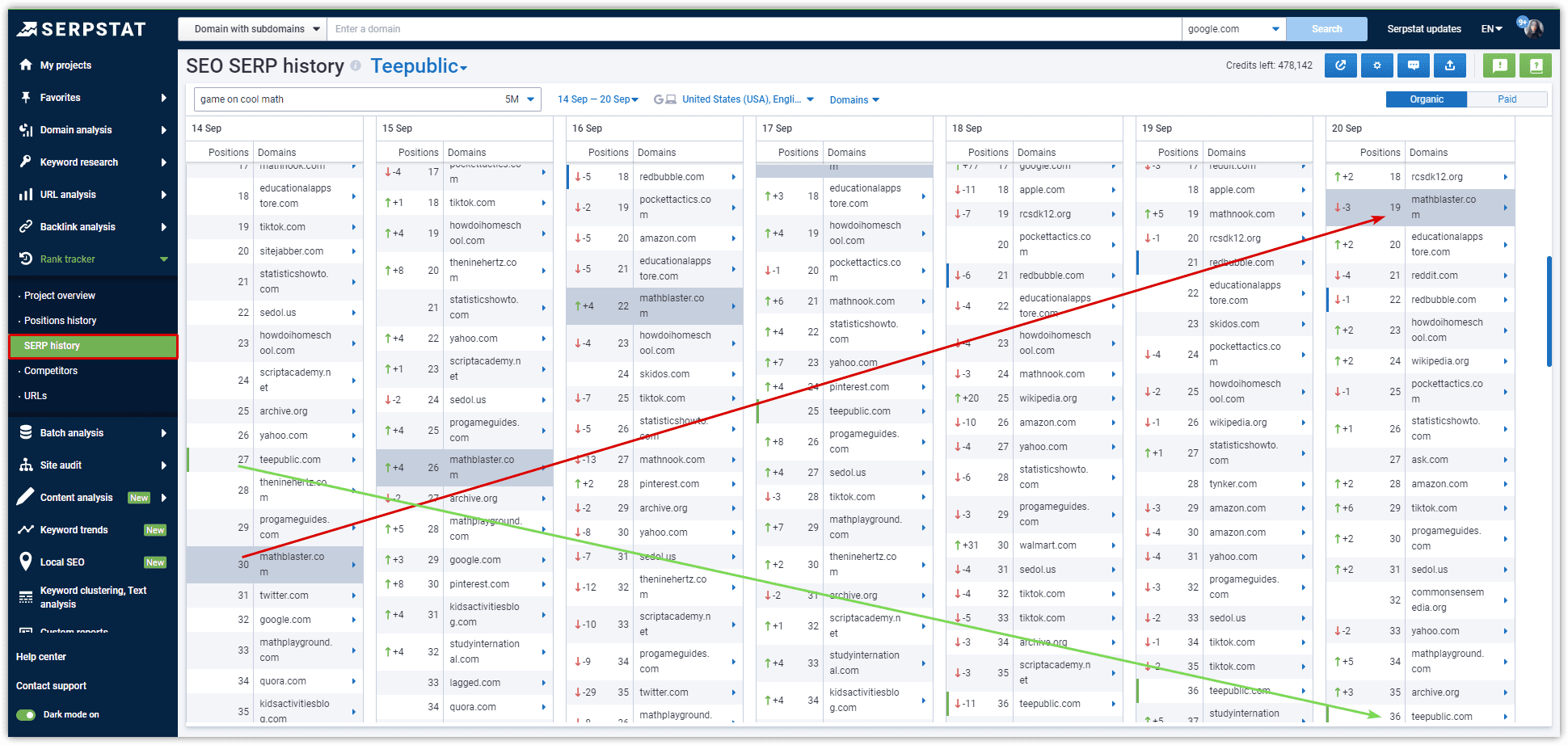
It's safe to assume that they must be doing something right to their page if its position in search results for the analyzed keyword went up.
In order to find this page switch over from the domain view to the URL view, and once you do that the system is going to show you the targeted URL.
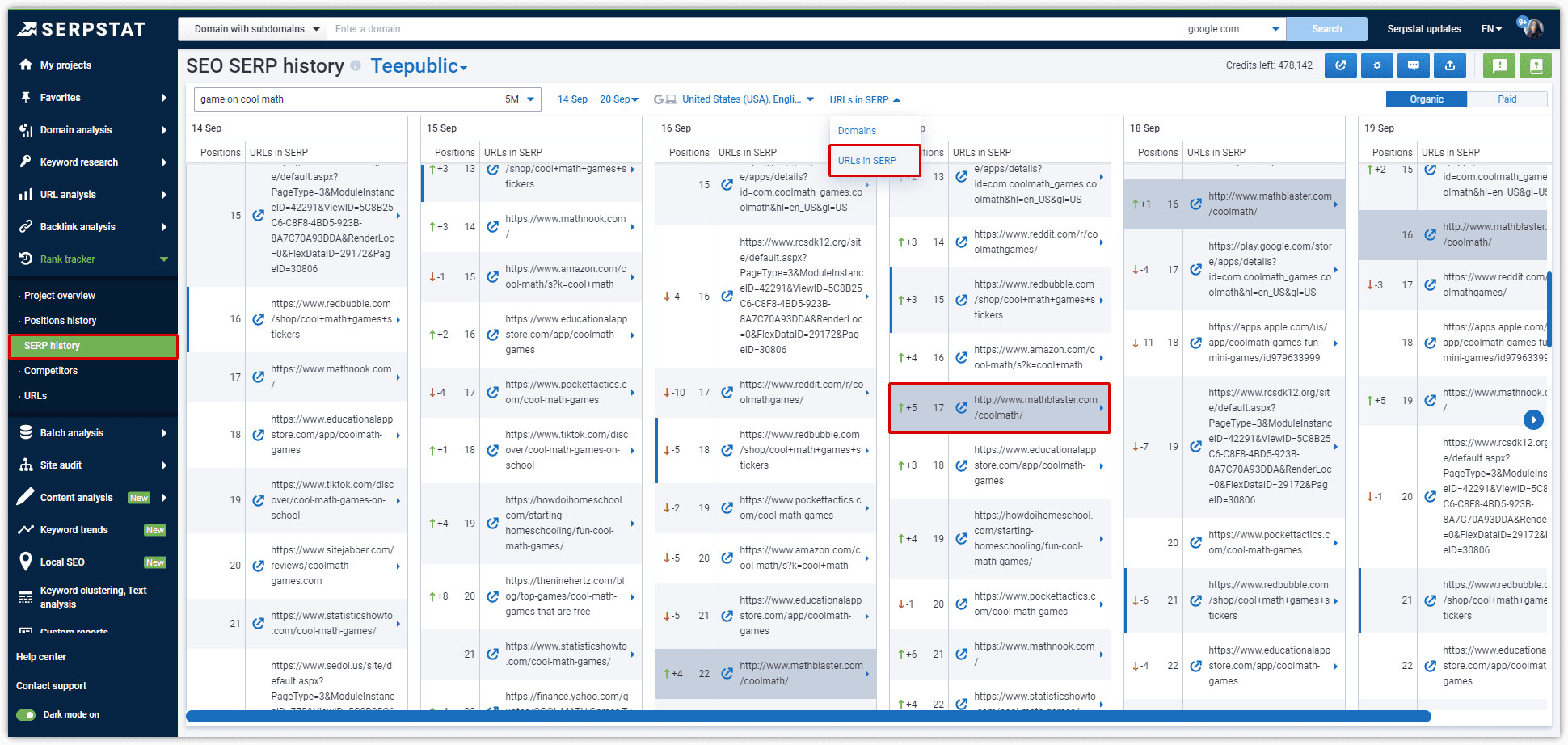
But frankly speaking, in some cases, you will not be able to discover any particular reason why the URL's positions for a keyword improved, most likely it's due to the backlinks.
Luckily Serpstat also has its Backlinks Analysis tool, so if you go even further, it will not be a mystery.
With this step, I’d also advise you to perform the SWOT analysis and based on its results probably use a few more of the Serpstat tools. But that would be a different article :)
Step 3: Finding Best Practices and Creating a Plan of Action
I tried to show tips and tricks to discover, track, and understand your competitors so that you can navigate the market with ease.
If after reading this article you feel like the Serpstat Rank Tracker is the right tool for your tasks, take a look at our detailed guide.
Discover More SEO Tools
Tools for Keywords
Keywords Research Tools – uncover untapped potential in your niche
Serpstat Features
SERP SEO Tool – the ultimate solution for website optimization
Keyword Difficulty Tool
Stay ahead of the competition and dominate your niche with our keywords difficulty tool
Check Page for SEO
On-page SEO checker – identify technical issues, optimize and drive more traffic to your website
Recommended posts
Cases, life hacks, researches, and useful articles
Don’t you have time to follow the news? No worries! Our editor will choose articles that will definitely help you with your work. Join our cozy community :)
By clicking the button, you agree to our privacy policy.
